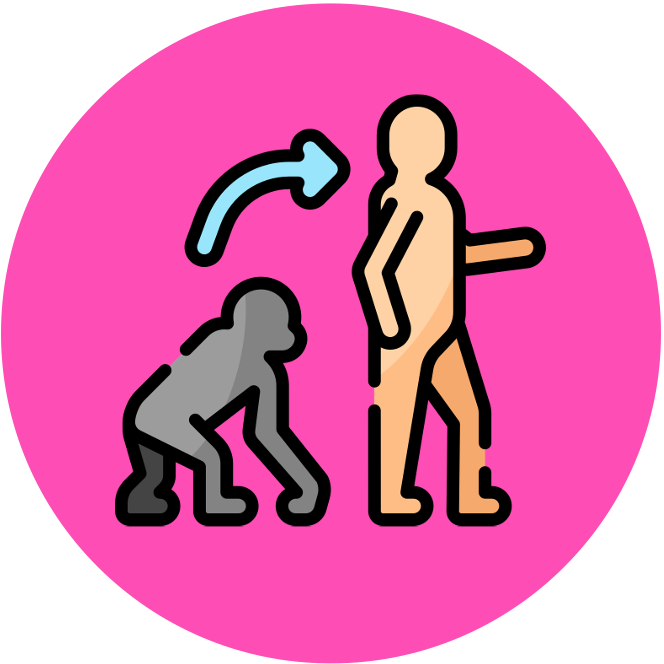

Structural Evidence
Evolution can be demonstrated by comparing the physical features of different species to identify similarities (i.e. structural homology)
-
The greater the level of structural similarity, the more closely related two species are predicted to be
Homologous structures are conserved characteristics found in different species as a consequence of common ancestry
-
Homologous structures arise as a result of divergent evolution, where a feature evolves into a variety of distinct forms due to the presence of different selective pressures
-
Homologous structures can include anatomical features, embryological patterns of development or vestigial structures
Anatomical Features
A classical example of a conserved anatomical feature is the pentadactyl limb present in all vertebrate tetrapods
-
Mammals, birds, amphibians and reptiles all share a similar arrangement of bones in their appendages based on a five-digit limb
-
Each appendage has one bone proximal to the body, two bones distal to the body, followed by a group of little bones and then digit bones (may be fused)
Despite possessing similar bone arrangements, tetrapod limbs may appear highly dissimilar in order to facilitate different modes of locomotion
-
Human hands are adapted for tool manipulation, horse hoofs are used for galloping, bat wings enable flight, while whale fins promote swimming
Pentadactyl Limb


Embryonic Features
Studying the growing embryo in animals or plants shows that closely related species go through similar stages of development
-
These similarities in embryonic development suggest that the organisms diverged from a common ancestor
Comparing the embryonic development of a range of diverse animal species, it can be seen that:
-
All terrestrial animals have non-functioning gill slits (pharyngeal slits) as early embryos – suggesting an aquatic origin
-
Many vertebrate species (including humans) demonstrate a primitive tail at an early stage of embryonic development

Fish

Reptile

Bird

Mammal
Vestigial Structures
Some species show the presence of functionless and reduced remnants of organs that were once present in their ancestors
-
Changes to the environment have rendered these organs redundant and so over time they have lost their functionality
These structures are called vestigial organs and demonstrate the evolutionary divergence of a species from a past activity
-
An example of a vestigial organ is the pelvic bone in whales – this bone suggests that whale ancestors were terrestrial mammals

Vestigial Pelvic Bone
Analogous Structures
Not all shared characteristics are indicative of relatedness – some structures may seem comparable but arose via independent evolutionary pathways
-
Traits that appear superficially similar but do not share common ancestry are called analogous structures
Analogous structures arise as a result of convergent evolution – where different species occupy the same habitat and are subjected to the same selection pressures
-
The shared conditions cause common adaptations to be selected for in the different species, resulting in structural similarities
Examples of analogous structures include:
-
The streamlined body shape of a dolphin (mammal) and a shark (fish)
-
The development of a bill in a duck (bird) and a platypus (monotreme)
-
The presence of wings in a butterfly (insect), crow (bird) and bat (mammal)
Analogous Structures

Insect

Bird





